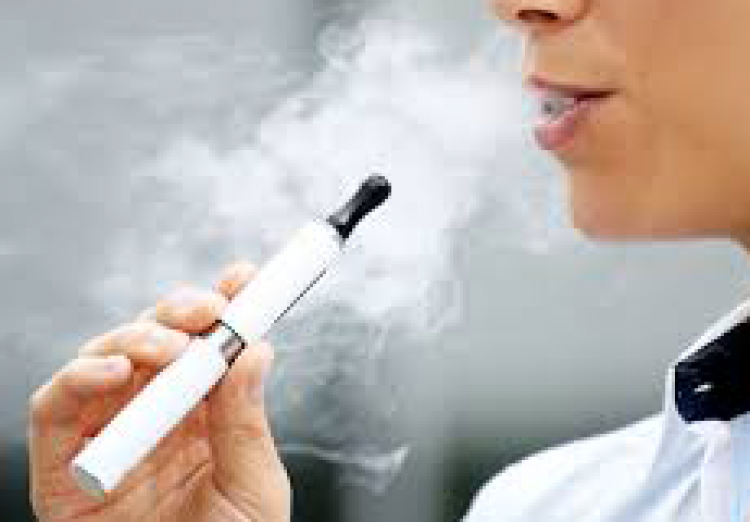Should you ban e-cigarettes in your workplace?

A growing number of employers are banning e-cigarettes on health and safety grounds. According to David Kidman of BLM, potential liabilities arise not only for those who produce and sell e-cigarettes but also for employers who permit the practice.
The market for e-cigarettes
A number of companies selling traditional cigarettes have entered, or intend to enter, the e-cigarettes market. Public health charity ASH estimates that 2.1 million adults in Great Britain currently use e-cigarettes – either alongside traditional cigarettes or as a complete substitute.
Cause of action
In England and Wales, claims against producers in EU member states are most viably made under the Consumer Protection Act 1987. Such claims would be made on the basis that “the safety of the product is not such as persons generally are entitled to expect”.
When considering safety, a factor that “shall” be taken into account is “the manner in which…the product has been marketed, its get-up…any instructions for, or warnings with respect to…the product”.
Claims against employers, by employees exposed to second-hand aerosol/vapour from e-cigarettes in the workplace, could be made under various statutes and in negligence.
Concerns about marketing and adequacy of warnings
The statement that e-cigarettes are healthy relative to traditional cigarettes risks obscuring the fact that e-cigarette use can still give rise to harmful substances. Indeed, the World Health Organisation (WHO) states that the safety of e-cigarettes has not been scientifically demonstrated and cautions that “the chemicals used in electronic cigarettes have not been fully disclosed”.
A New York Times report stated that formaldehyde (carcinogenic to humans) was generated from the heating coils. Meanwhile, a report by Britton and Bogdanovica found small amounts of formaldehyde (and acetaldehyde, another carcinogenic substance), and traces of carcinogenic nitrosamines, plus some toxic metals such as cadmium, nickel and lead, in some e-cigarettes.
In the US, the Food and Drug Administration (FDA) tested two leading brands and found that “samples showed that the product contained detectable levels of carcinogens and toxic chemicals to which users could potentially be exposed”. Testing “also suggested that quality control processes used to manufacture these products are inconsistent or non-existent”.
Despite this evidence, Nicoventures ran a TV campaign featuring “two good-looking healthy young adults running through smart modern city streets at speed – fast, fit, sexy, healthy, cool”. Meanwhile, in January 2013, Nicolites’ claim that the vapour was “completely harmless” was banned.
Another concern of the FDA, WHO and Public Health England is marketing that may appeal to children, with flavours such as black forest gateau as well as cartoon adverts – including one which showed Santa Claus enjoying an e-cigarette.
In the workplace
The WHO has published a report on e-cigarettes calling for marketing restrictions and the banning of e-cigarette use indoors in public areas and work places. They noted that “bystanders are exposed to the aerosol exhaled” and that e-cigarettes “are marketed to be used where smoking is prohibited…exhaled aerosol is likely to increase above background levels the risk of disease to bystanders”.
The BBC recently banned use of e-cigarettes inside all of its buildings, following the example of companies such as Standard Life and JCB. With potential health risks unknown, and bearing in mind the WHO’s opinion that there is a “lengthy lag time for onset of many diseases of interest such as cancer”, a prudent risk manager should give thought to whether to follow the BBC’s example in the workplace. There is sufficient information in the public domain to justify a workplace ban, at least as a precautionary measure to be reviewed as more evidence becomes available.
Resistance to a ban in the workplace may arise, particularly bearing in mind that no claims related to passive smoking of even traditional cigarettes have been successful to date.
Causation
In the Scottish courts Mrs McTear was unable to establish the link between active smoking of bona fide cigarettes and lung cancer. However, the potential remains for a claimant to prove this ‘causation’ link. The causation hurdle is a double one; claimants would have to prove that substances found in e-cigarettes can cause cancer and that such substances caused the individual claimant’s cancer. This inevitably involves expert epidemiology evidence, and consideration of any previous contributions to the risk of developing cancer, such as the individual’s past history of traditional cigarette smoking.Those exposed to second-hand e-cigarette aerosol/vapour will have a more difficult time proving causation.
David Kidman is a partner at BLM

David Kidman - BLM
